A Complete Tourist Guide for Carcassonne
The old Cité of Carcassonne looks like it’s been lifted straight from a medieval movie set — and to be fair, it has. Most famously, it stood in for Nottingham Castle in Robin Hood: Prince of Thieves (1991), but it’s also featured in the French comedy Les Visiteurs and the TV mini-series Labyrinth.
UNESCO-listed and hugely popular, the city draws around 3 million visitors a year, with 600,000 of them touring the castle and ramparts. That places it firmly among France’s top cultural attractions. With 52 towers, four city gates, and nearly three kilometres of fortified walls, the Cité covers a surprisingly large area.
Its storybook look owes a lot to architect Viollet-le-Duc’s dramatic 19th-century restoration. Some purists criticise the ‘prettified’ result, but there’s no denying it photographs well. Just be warned — if you’re crowd-averse, Carcassonne in summer might test your patience.
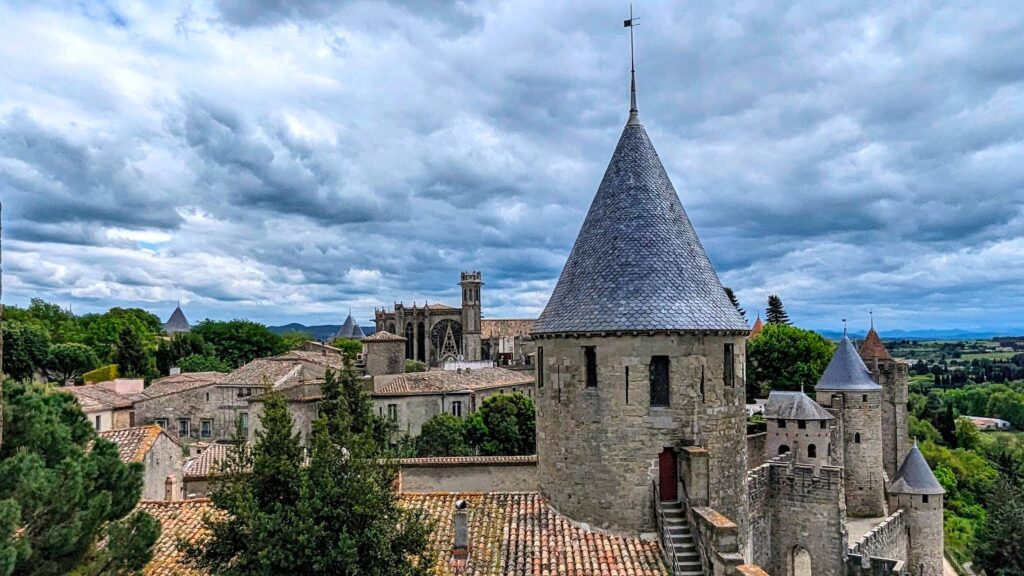
The Cité Médiévale, with its turrets, towers and tourist shops, is the main draw, but Carcassonne is actually a city of two halves. Many visitors, especially independent travellers, arrive in Bastide Saint-Louis (Ville Basse). This is the “new” town which was laid out in the 13th century. With its leafy squares, churches, arches and quiet streets, it has a more lived-in feel. I’d recommend exploring both sides, if you can, to make the most of your visit.
I visited independently in May and, despite the crowds, it lived up to the hype. That said, I was happy with the one (long) day and didn’t feel I’d missed out without staying overnight. Here’s what I saw, what I loved, what I wish I’d known and what I’d quietly skip next time.
Making Your Way to the Cité Médiévale
Many day trippers arrive on organised group day tours — a good option if you’re short on time, prefer less walking, or want the ease of a guide and hassle-free transport. Here are the options if you wish to travel independently, like I did.
🛣️Travelling to Carcassonne
🚍By Group Tour: There are group tours from Toulouse and even from Barcelona!
🚄 By Train from Toulouse: An easy day trip from Toulouse by train from 📍Toulouse Matabiau. For the best deals, book ahead. Three services operate on the line: IC and INIOU high speed services: These typically take 45 minutes. Tickets have variable pricing (from around 8 EUR each way to around 22EUR). These tend to sell out in advance. TER Occitanie/liO regional train service: These typically take 65 minutes and are fixed price tickets. 18.10EUR. These can be purchased in advance or on the day at the station.
🚄 By Train from Elsewhere. There are also regular services, taking less than 90 minutes, from Montpellier, Sète, Narbonne and Beziers as well.
🚌 By Bus from Toulouse: Flixbus operates services between 📍Toulouse Bus station (next to the train station) and 📍Carcassonne. The service takes a little longer, from 1hr 15 minutes, with a drop off in 📍Ville Basse. There’s also a limited service with pickup from 📍Toulouse airport. Prices start from around €5-€6 depending on which service and how early you book.
✈️ By Plane: 📍Carcassonne airport, serves several European destinations including UK and Ireland. Shuttle buses are timed to align with plane arrivals and departures and take around 14 minutes with various stops in Carcassonne including the Cité Médiévale and the train station. There is also an airport at 📍Toulouse Blagnac
🛅 Baggage Storage – If you have large bags with you, you will appreciate being able to drop them off. Don’t underestimate the amount of walking you may do on a day spent in Carcassonne. I didn’t spot any services at the train station but there are storage options in the city with Bounce Do note opening and closing times for each location, so you can drop and retrieve your luggage successfully.
If, like me, you have made your way independently to Carcassonne, your arrival point may be the station, or the coach stop close by.
🚉Arrival at Carcassonne Station
From the train station or the bus station, it’s a short walk (around 15 minutes) through the lower town (Ville Basse) to the Pont Vieux (Old Bridge).
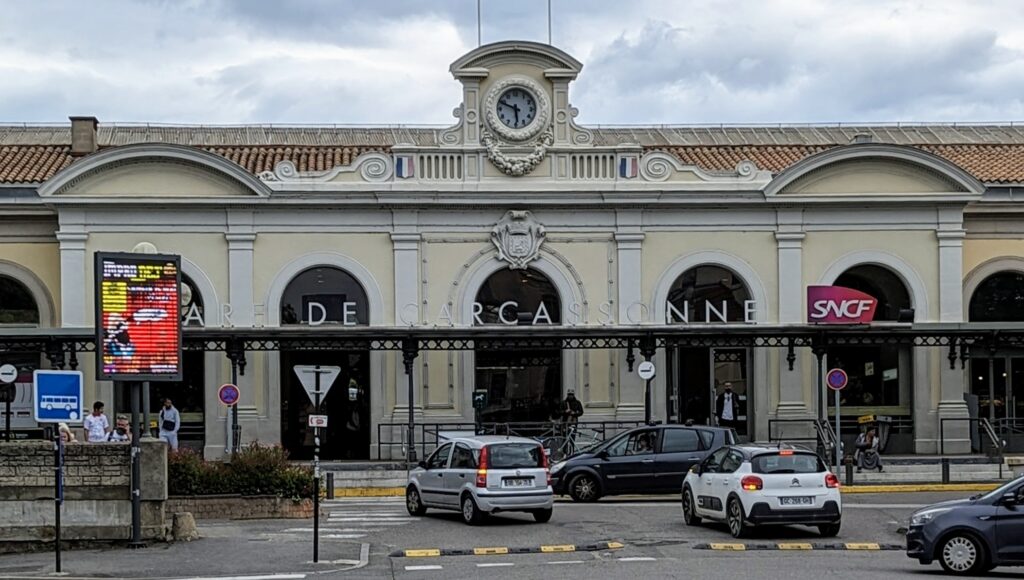
From here you start the steady climb to the medieval cité. (allow another 15 minutes).

If you’re arriving by train, don’t just march straight toward the medieval cité, take a moment to look around.
🌉Cross the Canal Du Midi at Pont Marengo
My first view, when leaving the station, was of the Canal Du Midi. It’s at its most scenic in and around Carcassonne and it’s also the starting point for boat tours around the city. Bateau le Cocagne has a few sailings every day with the 6pm tour being particularly popular for a view of the ancient city from the water at dusk.
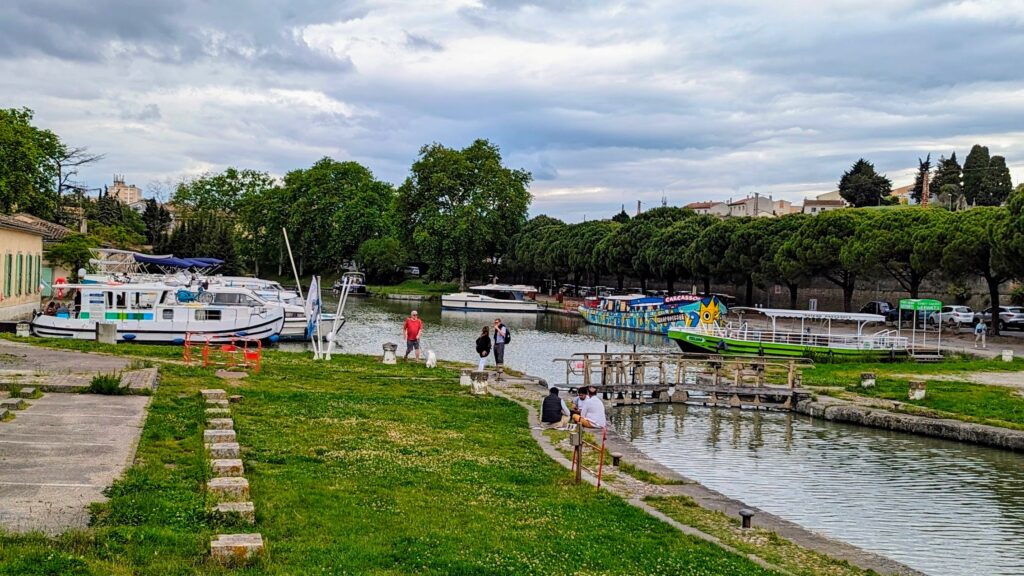
⛲Linger in the Square André Chénier
Just across the bridge is Square André Chénier, a large, elegant square with green spaces, fountains and statues. It’s a great place to pause, especially if you’ve arrived early and the city’s still waking up. For me, it made a well-timed breakfast stop, as I prepared for the day ahead.
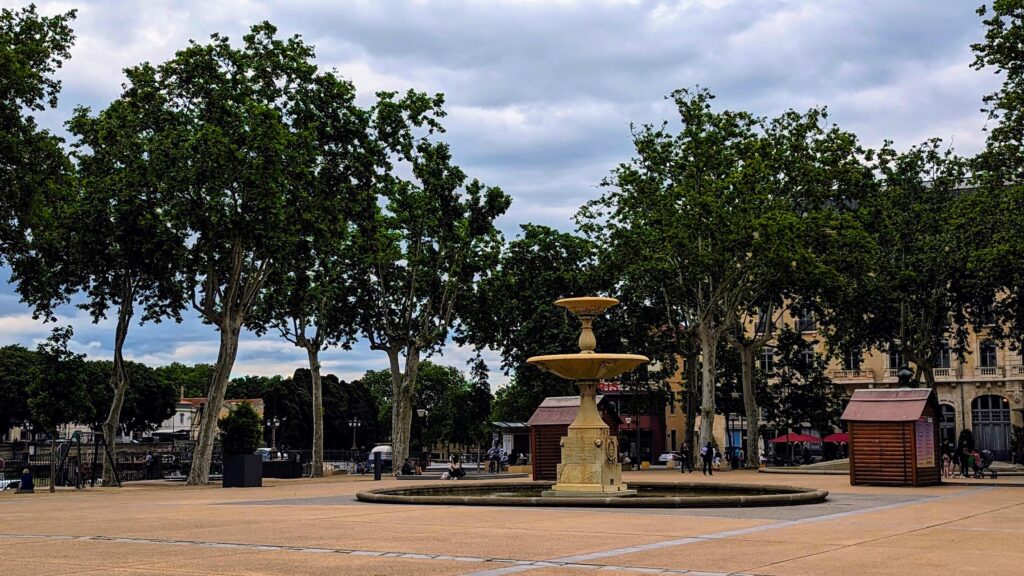
⛪Pont Vieux – First View of Cité Médiévale
I headed for Pont Vieux and as I crossed I was treated to a postcard-perfect views of the old city rising above the river, bathed in sunshine.
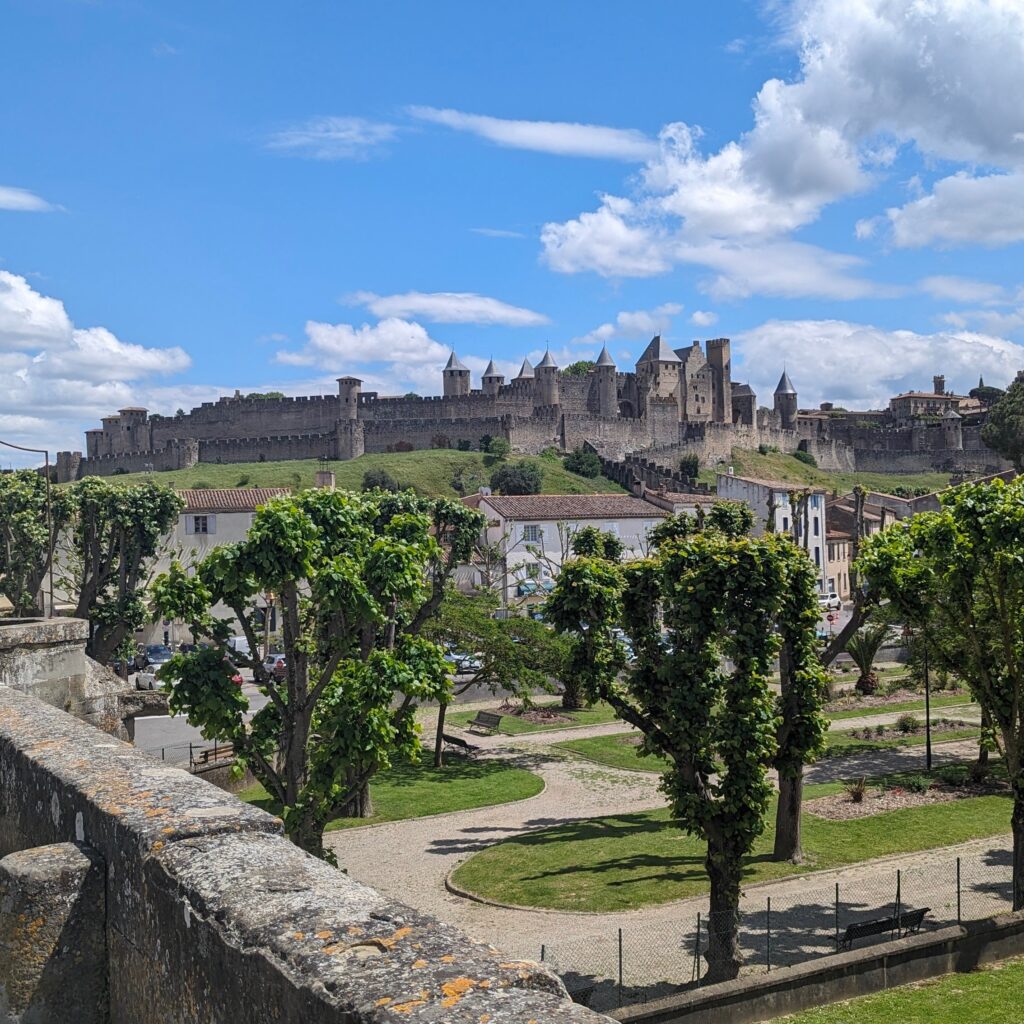
🚶🏼➡️Follow the Medieval Streets to the Gates
The walk up through Rue Trivalle is lined with medieval houses, small cafes, and the general sense that you’re about to time travel. It was quiet on the way up but the time I left, later in the day, the cafes and shops were filling up and there were a lot more pedestrians.
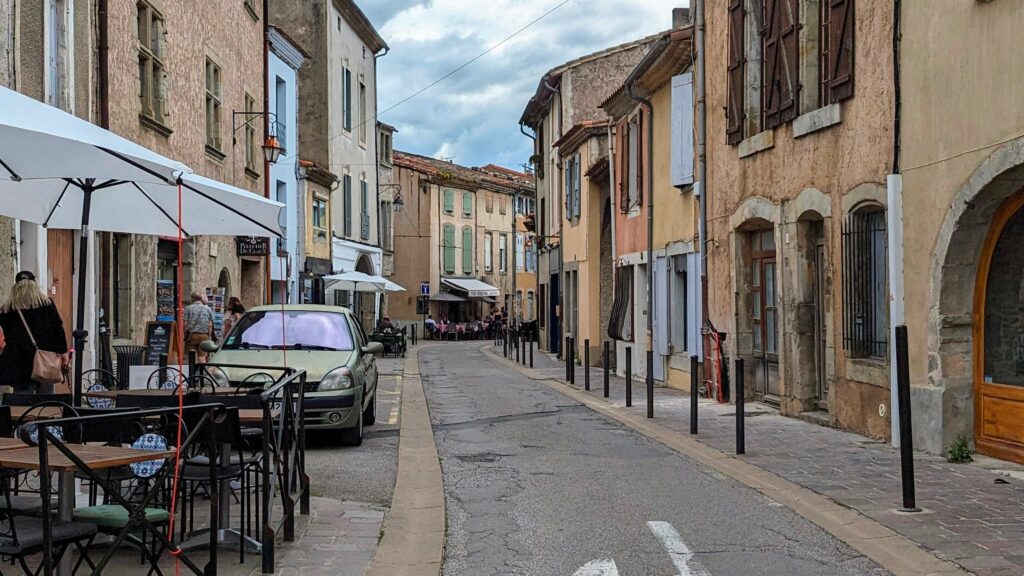
The route gradually gets steeper as you get closer to the city walls, but it’s not particular strenuous.
🏰Arrival in the Cité Médiévale
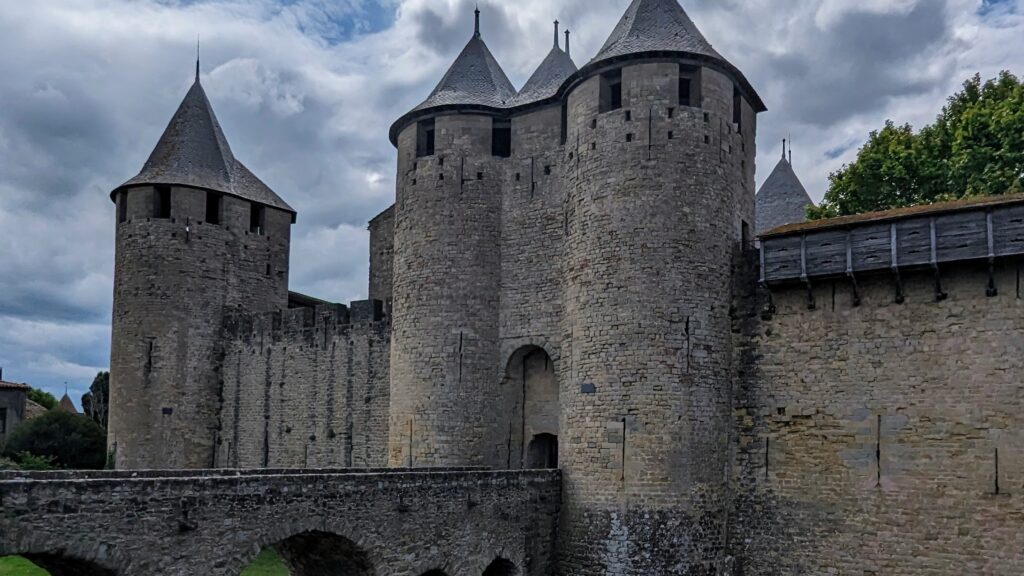
The Cité Médiévale is free to enter through the Narbonnaise Gate or the Aude Gate. Once inside, you are free to walk around the Cité. The admission price to go inside Chateau Comtal and walk the ramparts is €13 during the off-season (October to March) and €19 during the high season (April to September). I’d definitely recommend paying the entrance fee. There are also guided tours in several languages.
Things to Do In Carcassonne – Inside Cité Médiévale
🗺️Map of the Cité
I’m sharing with you my map of the Cité Médiévale, so you can easily locate the places I mention.
💡 Tip: To save this map to your own Google account, open it in a new tab and choose “Copy map” from the menu
🧱Walk the Ramparts
Paying the admission gives access to the inner ramparts. These offer panoramic views over the city, the Aude river, and the rooftops of the lower town.
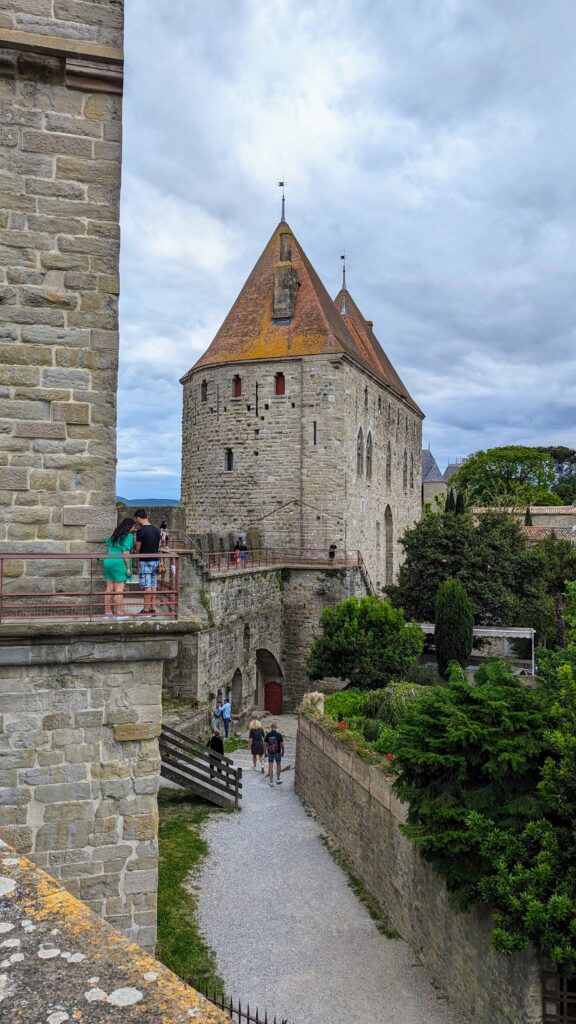
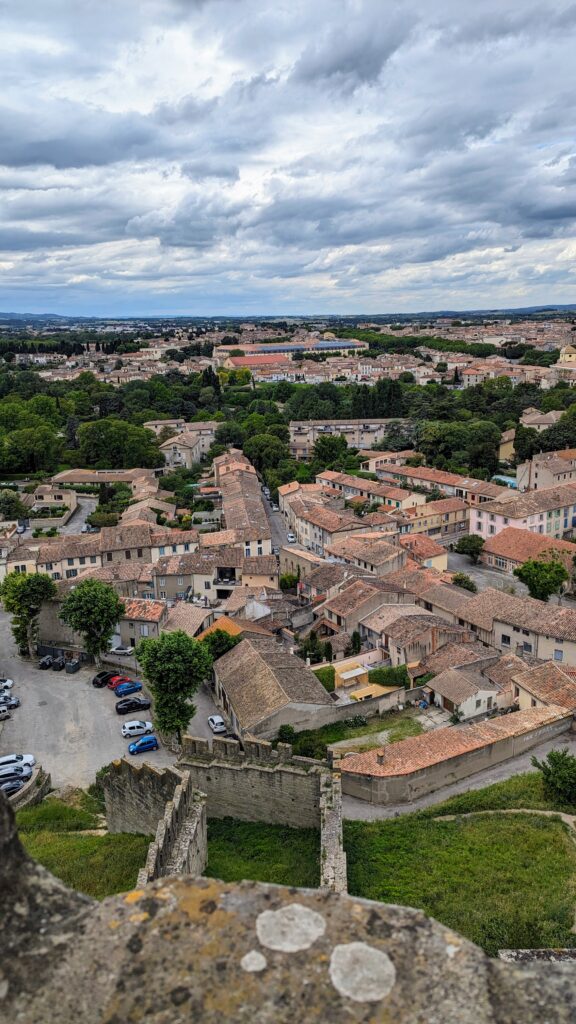
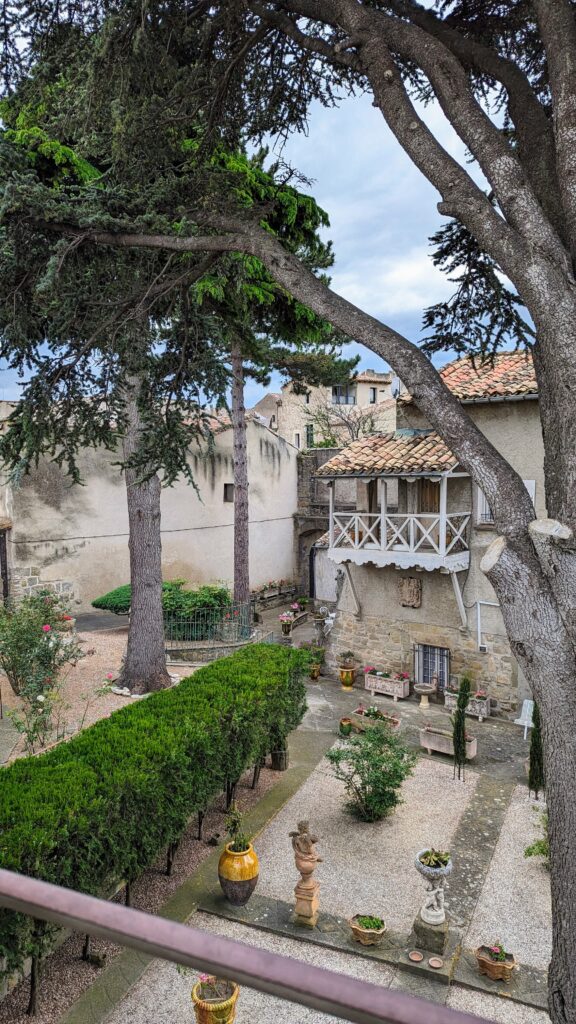
🏰Explore the inside of Château Comtal
The central courtyard reveals the layered history of the castle’s construction, starting with the remnants of the Roman walls, rebuilt and extended in medieval times. It’s easy to spot the later 19th-century restoration by architect Viollet-le-Duc as these give it the fairy tale vibes.

.Inside there’s a small chapel and a very modest museum showing carvings, sculptures and some religious art. While it’s interesting, the main draw for me, was the walk around the walls.

Inside there’s a film room, with a film explaining the strategic importance of Carcassonne. There’s some very impressive 3d imagery, modelling the castle from its earliest beginnings through to the site transformation by Viollet-le-Duc in the 1800s

🍴Dine in Cité Médiévale
The Place Marcou is the central square full of cafes with outside seating and people. There are further cafes leading of the streets around the square. Many offer tourist menus for the crowds arriving every day.
The only thing I ate in Cité Médiévale was an ice-cream in the shape of a flower. Amorino Carcassonne, is the place for this. The servers make petal shapes out of the ice-cream and arrange them in the cone, until you have a rose inspired ice-cream.

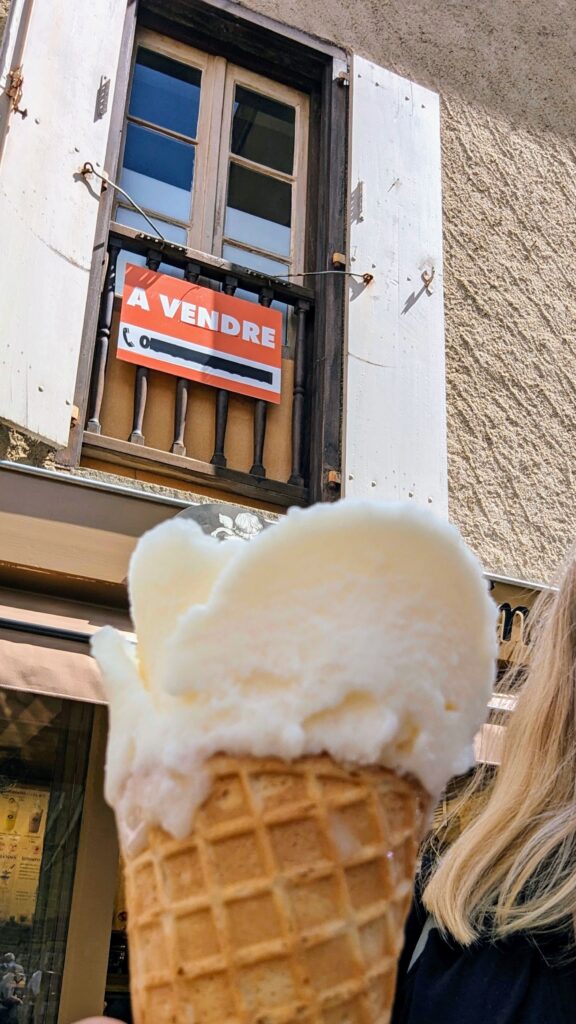
Carcassonne has some ‘high end’ restaurants, including some with Michelin stars. There’s La Barbacane inside the Hôtel de la Cité and also the Comte Roger, offering excellent regional fare like cassoulet. Just outside the walls, there’s La Table de Franck Putelat. It’s a two‑star restaurant praised for creative regional dishes and a seasonal menu crafted from its own garden.
That said, I’m not really the Michelin‑type. When it comes to dining options, I felt Toulouse offered more variety and value.
🛍️Shop in Cité Médiévale
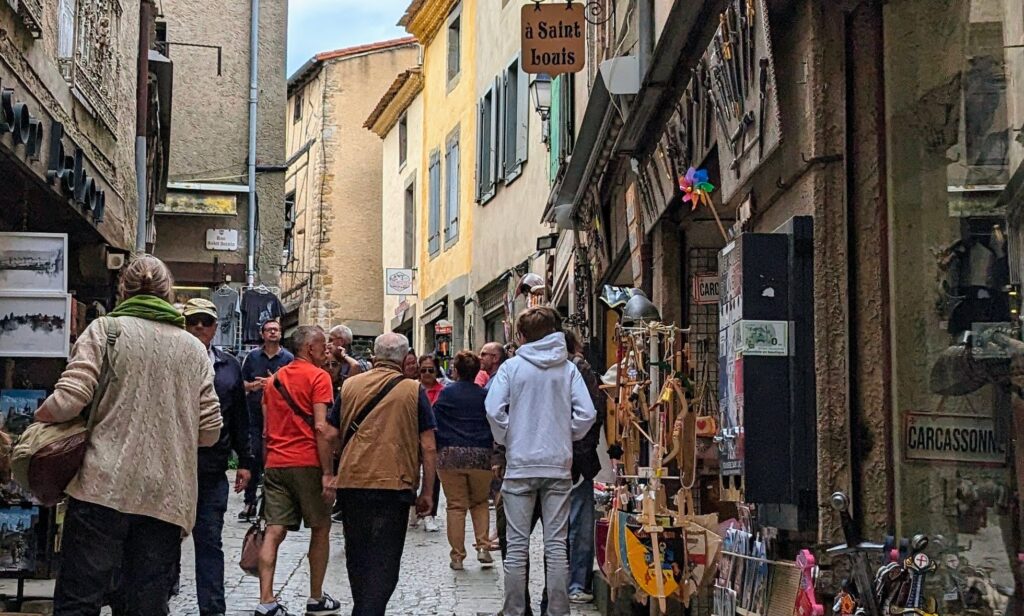
The lanes within the walls are bustling with visitors. If you are looking for a fridge magnet or a knight’s costume complete with sword, you will not be disappointed with the shopping! Carcassonne is quite unashamedly touristy, but with a setting this striking, it’s hard to mind.
⛪Visit Basilique Saint Nazaire
A beautiful church with impressive stained glass, especially the large round rose window. A peaceful contrast to the busy lanes. There’s a gothic side (reconstructed by restoration architect Viollet-le-Duc) and a Romanesque side with a restored turreted tower.

🚂Tour Around the Outside of the Walls
There’s also a tourist train. This goes around the OUTSIDE of the city walls. It can be picked up just outside the Porte Narbonnaise which is not far from the city carpark. For those with limited mobility or young children this could be a good option. I didn’t take the tourist train myself. I did notice it had mixed reviews and doesn’t always run. So if this is important to you, I would check it’s operating before planning your trip around it.
Alternatively, you could follow the same route by foot, to get some different views of the medieval city.
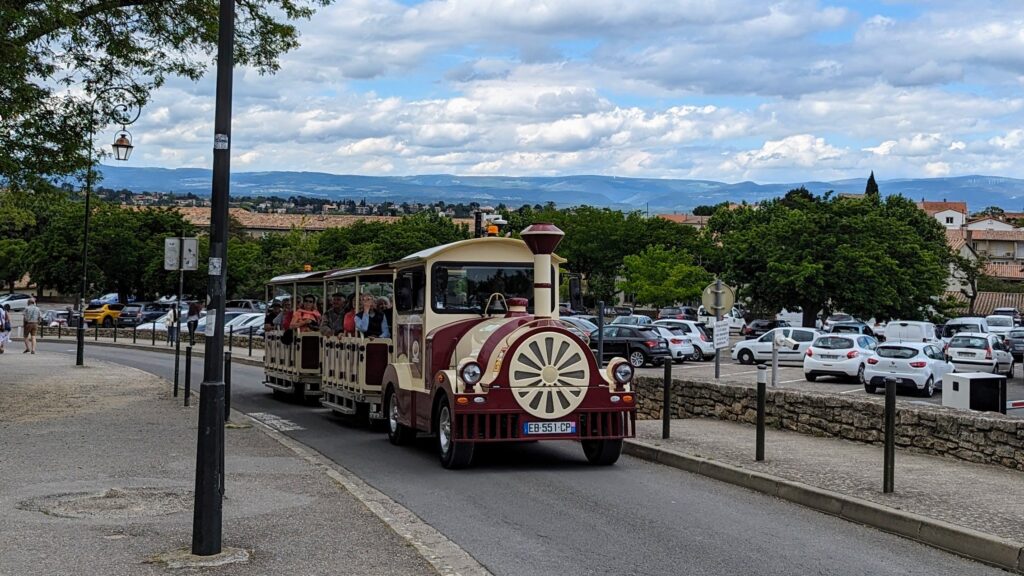
Things to Do in Carcassonne – Bastide Saint-Louis
🗺️Map of Bastide Saint-Louis (Ville Basse)
I’m sharing with you my map of the Bastide Saint-Louis, so you can easily locate the places I mention.
💡 Tip: To save this map to your own Google account, open it in a new tab and choose “Copy map” from the menu
The Lower Town (Ville Basse) is built on the left bank of the River Aude at the base of the hill crowned by the ancient Cité de Carcassonne. Many visitors miss Bastide Saint-Louis altogether, heading straight for the ramparts — but that’s a shame. It’s full of history, character, and charm, with winding streets lined with old buildings, cafés, restaurants, and markets. Here are a few highlights to look out for.
⛲Enjoy the Squares and Boulevards
The Ville Basse is made up of a grid of perpendicular streets which were once enclosed within 14th century walls. The Languedoc region is famously windy. The streets act as channels for the four local winds, the Tramontane, the Vent d’Autun, the Marine, and the Mediterranean. This makes it considerably cooler than the Cité Médiévale. I visited on a warm spring day and the cool breeze was very welcom.
Place Carnot
This is the charming heart of the Bastide. At its centre is the elegant Neptune Fountain, complete with a rose‑coloured marble basin and dolphin sculptures. It was built for King Louis XIV and used to supply water from the Aude. Some of the pavement area has pink flagstones too.
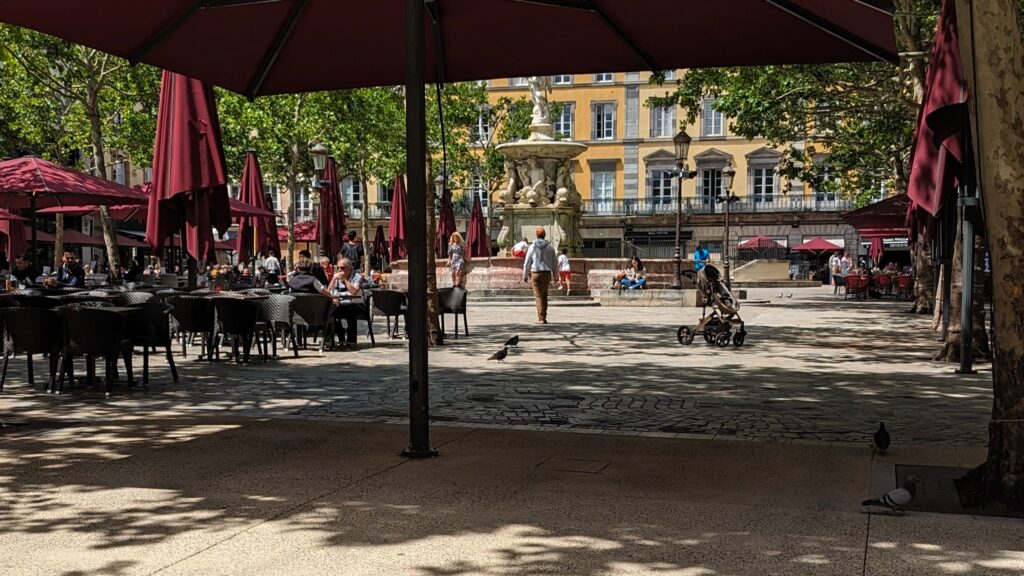
On market days (Tues, Thurs, Sat), the square fills with stalls set up under the plane trees. Unfortunately I missed it!
Place du Général de Gaulle
Place du Général de Gaulle has the picturesque and much photographed Portail de Jacobains at one end. It’s also close to Boulevard Barbes, which has a tree lined walkway complete with statues and a children’s play area. In winter it hosts a pop-up skating rink and Christmas market.


Square Gambetta
Square Gambetta is a more modern space. More tree lined, shady paths, but this time with a number of modern statues. I photographed a statue of a girl leaning toward a tiny pool, and a World War II Resistance memorial, but there were a number of others.
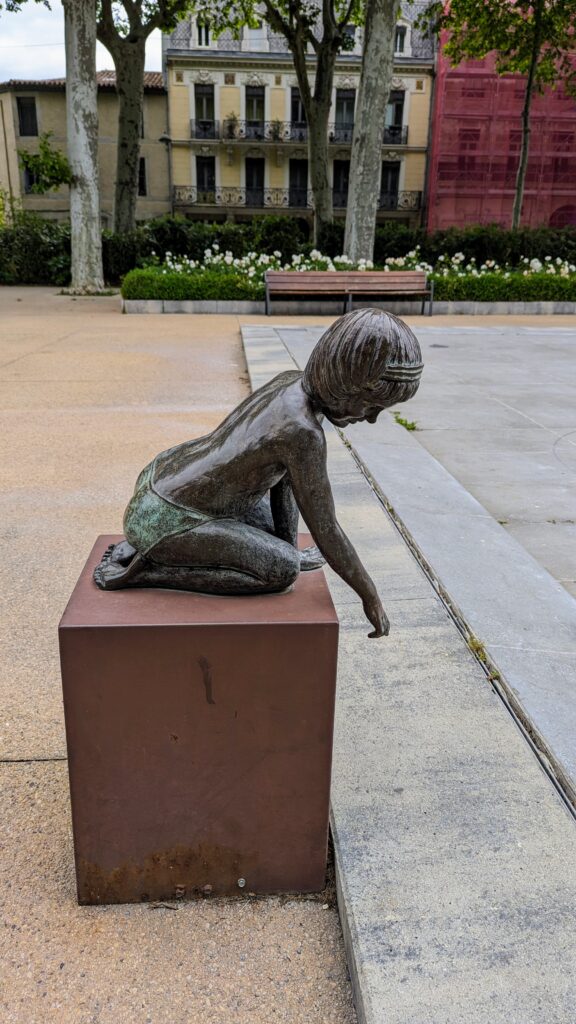

⛪Explore the Churches of Bastide Saint-Louis
Cathédrale Saint-Michel
Originally built in the 13th century as a fortified church, Saint-Michel has a solid, austere presence from the outside. Inside, it’s atmospheric with high ceilings, stained glass, and a cool, peaceful interior that’s still very much in active use.
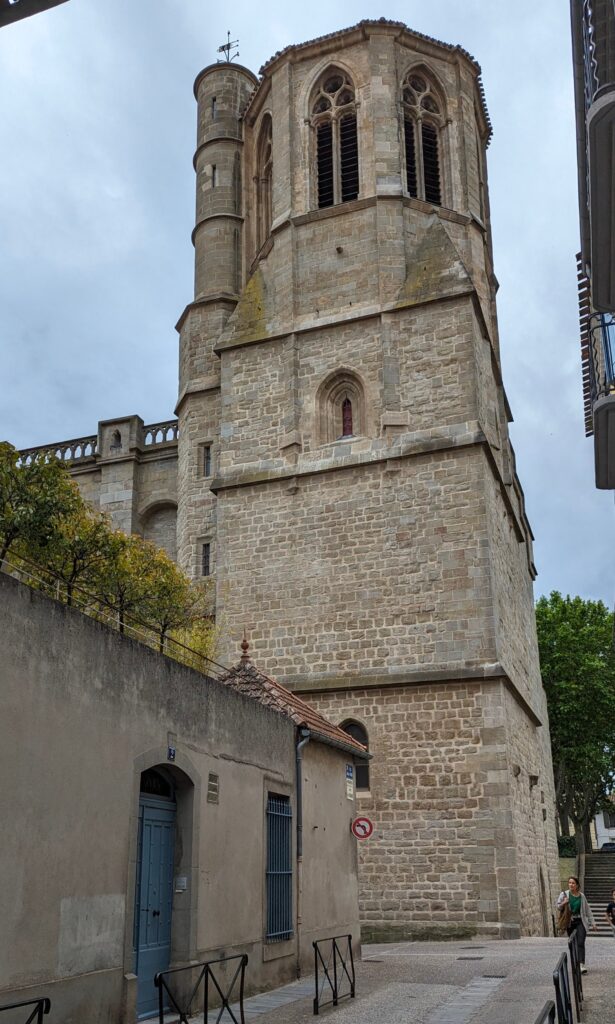
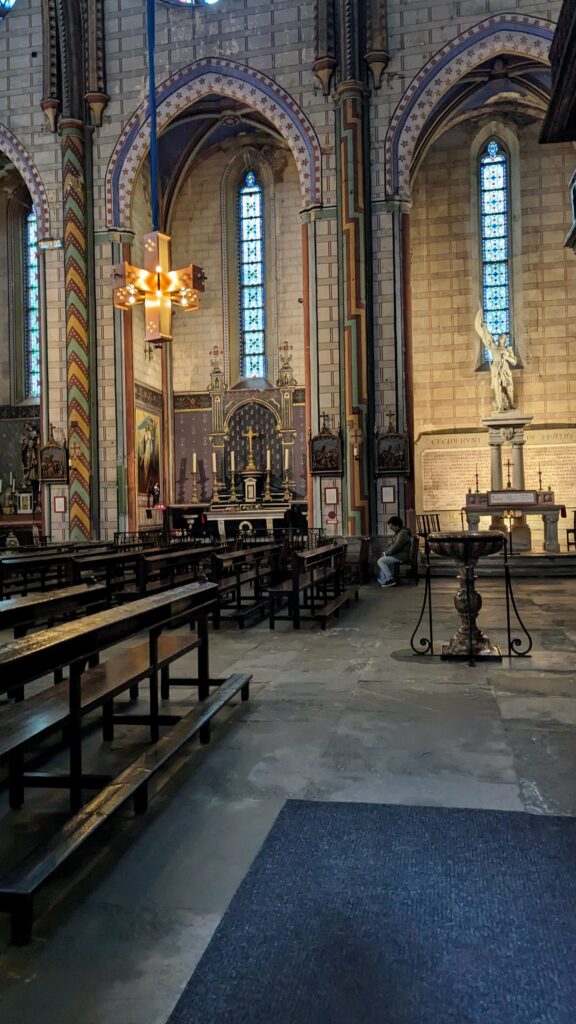
Église Saint-Vincent
Tucked away on a quieter street, Saint-Vincent has one of the biggest bell towers in the Bastide. The interior is calm and uncluttered and a good spot to pause, reflect and cool off on a hot day.
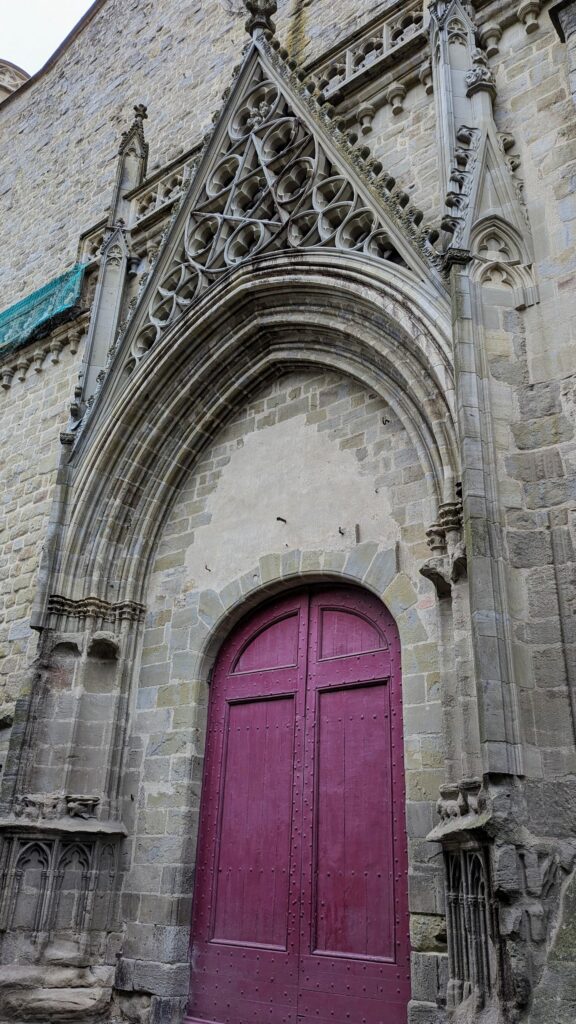

Chapelle des Dominicains
Once a convent church, this small Gothic chapel has been repurposed into a gallery and local exhibition space. It’s usually closed outside of events, but even from the outside it’s worth a look — arched windows, stone buttresses, and a slightly timeworn elegance.

I stopped for a quick photo before moving on, but if it’s open, it’s worth a peek in and it’s also worth checking for any specific exhibitions.
🍴Eating in Bastide Saint-Louis
I ate at Café de la Comédie, located on the pretty street, Rue Courtejaire close to Portail des Jacobins in the Bastide Saint-Louis. It turned out to be one of the few places in Carcassonne with a proper vegetarian menu, something that’s surprisingly hard to find in a city famous for cassoulet.
I went for the two-course plat du jour — Parmentier de Canard followed by Crème Brûlée — but the vegan Parmentier and cassoulet were front and centre on the chalkboard. Whether that’s culinary heresy is up to you, but it’s good to know well-reviewed meat-free options exist. Service was brisk, the price fair, and I wasn’t the only solo diner.
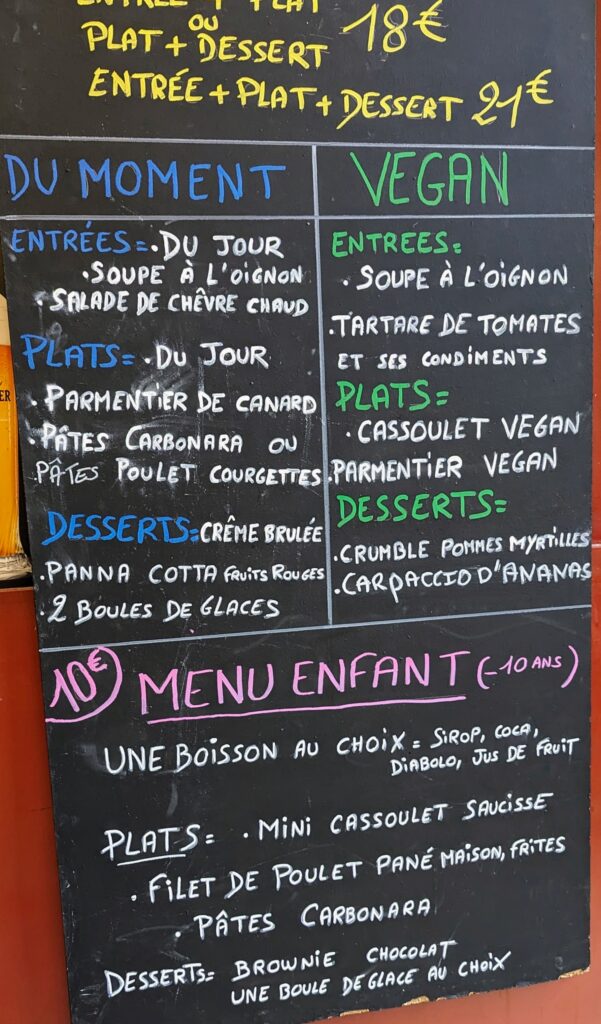

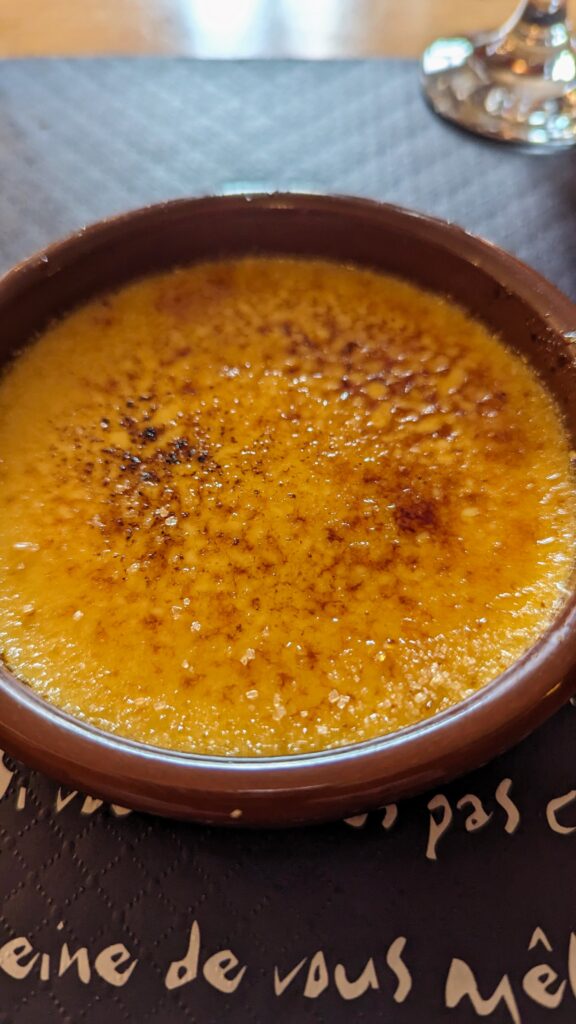
✨Other Things I Didn’t Do (But You Might)
Here are a few extras I didn’t squeeze in — partly because I hadn’t done enough advance research, and also because I was happy to wander. So do try these if you’re planning a longer stay or have more stamina than me:
🎆Festivals and Events at Carcassonne
1. Carcassonne Festival: This international festival takes place throughout the month of July, featuring a diverse range of arts, including music, opera, dance, and theater. It attracts hundreds of thousands of visitors annually.
2. Feria de Carcassonne: This Spanish-themed festival is held in late August/early September. It features free concerts, family-friendly events, and traditional food and drinks like tapas and paella.
3. Carcassonne Cité Fireworks (Grand Fireworks): A must-see event every July 14th, this display is known for its stunning effects and has been taking place since 1898.
4. The Magic of Christmas: During December, Carcassonne hosts this festive event, which includes a torch-lit procession in honor of Saint Nicolas (around December 6th), an ice rink, Christmas markets, and other activities.
🛌🏼Should You Stay Overnight?
I was happy I stayed in Toulouse. Carcassonne is stunning, but the old town is very much a day-trip destination. By early evening I was ready to leave the set menus and souvenir shops behind. That said, if you stay overnight, you might get the ramparts to yourself at sunrise.
Final Thoughts on Carcassonne
While the Cité Médiévale sometimes gets flak for feeling a bit “theme park,” I found it charming and thoroughly enjoyed my day. That said, one day was enough — and visiting outside peak season was definitely a bonus. I was glad to return to Toulouse for its wider range of activities, dining options, and better overall value.
A walking tour of the Cité might have helped me get more from the visit — I didn’t spend long enough at the Basilique Saint Nazaire, for one. Still, I was happy to go independently from Toulouse. It gave me the freedom to explore at my own pace, especially in the Ville Basse. Seeing both halves of the city — and the walk up from Pont Vieux — was a real highlight.
With the sun shining, I gave the museums a miss, but I do regret skipping the Canal du Midi boat ride. Next time, I’d aim for a market day (Tuesday, Thursday, or Saturday) — and I’d love to see Carcassonne at Christmas.
Carcassonne may be well-known, but it rewards those who wander — and take the time to see it on their own terms.
Next up: planning your packing for Carcassonne? Check out my 5kg travel guide here
Further Reading for Carcassonne
I hope you found this Carcassonne travel guide useful. If you are looking for something to read to help with your trip planning even further, be sure to check out the articles below:

15 Things to Do in Toulouse – A Real Travellers Guide
Toulouse is one of those cities that quietly grows on you. It’s easy to get around,…
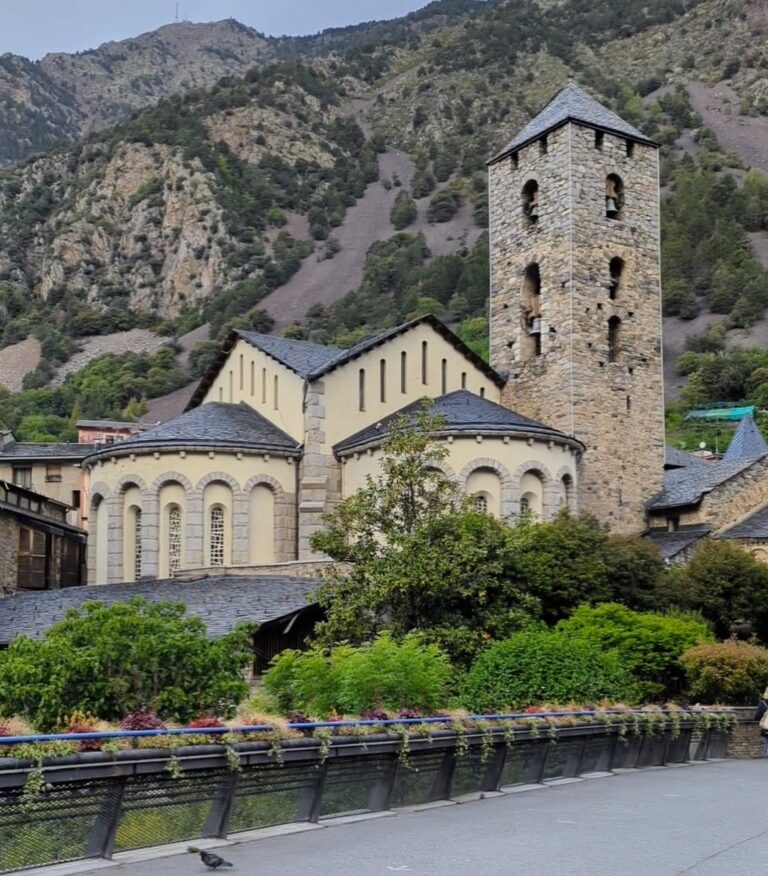
21 Best Things to Do in Andorra (That Go Beyond Duty-Free Shopping)
As I close in on visiting every country in Europe, I’m visiting some of Europe’s micronations….
My Personal Packing Advice and Tips
I don’t check bags, opting for a (very) small pack and baggage freedom. Start Here for my ‘tried and tested’ formula and details of the things I bring with me and the things I leave behind.
Discover more from ONE SMALL BAG
Subscribe to get the latest posts sent to your email.
